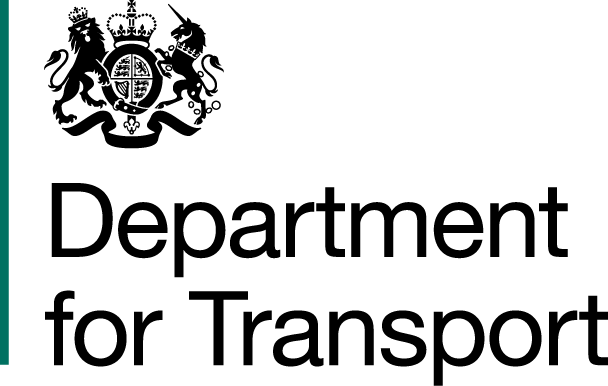Overhead Line Equipment FAQs
Work continues to electrify and modernise around 170 km of track, which mostly consists of installing overhead line equipment to power our new trains.
We're working hard to get the message out that there is an additional danger when it comes to trespassing on this part of the railway. Whilst there is no danger to people using the railway correctly, anyone who does not respect the railway boundary - the fence line that protects both people and the operational railway from deliberate or accidental trespass - are placing themselves at risk.
As well as the potential of coming into contact with the power lines, there are other dangers in trespassing on the railway, as over the coming months we'll be testing our new rolling stock across the network, and these train movements don't always appear on our information boards or online journey planners. We'll also be continuing to carry out infrastructure work to improve our rail lines, where we'll be utilising railroad vehicles and machinery on the tracks.
As such, our public safety campaign ‘No Second Chances’ has been live since May 2023. This includes a major advertorial campaign, mass letter drops to communities and stakeholders, social media and press content, visits to schools and public events.
I am a parent/guardian and am concerned for my child’s safety. What can I do?
It’s important to note that for those using the railway correctly, you will be as safe as you have ever been. We have designed the system to be far enough from people to keep you safe. We have also put in place new fencing along the railway, raised the heights of bridges that span the railway and put in place obstacles where we need to ensure there is distance. But for those that are attempting to steal the cables or those trespassing on the railway, there is now an added danger.
This is equipment carries 25,000 volts of electricity - that’s 100 times your household power and it’s always on. Also, you don’t have to touch the equipment to receive a shock, coming too close can see the electricity jump and a shock is fatal 9 times out of 10, so it’s really important that people stay within the safe areas and not trespass on the railway.
Trespass can take many forms, it can be someone taking a shortcut across the tracks or someone retrieving a football they might have kicked over the fence, it can also be young people playing with friends in areas they shouldn’t or graffitiing; this is all behaviour that now has an added risk so we really to need people to stay off the tracks and spread this same message to families, friends and children.
We are spreading the message far and wide that these overhead power lines are now on and trespassing carries a bigger danger now more than ever. A major public information campaign is live across social media, on posters across South Wales, in towns and city centres. We have also written to those living by the railway and are visiting schools to educate young people on how to stay safe.
We have reached out to all high schools near electrified lines and have already visited many (as well as several primary schools by request), but if you are a parent, guardian or teacher and would like us to visit your local school to deliver an educational safety workshop, please ask your school to contact us at engagement@tfw.wales.
Here’s what young people need to know:
- If you touch an OLE line, the consequences are likely to be fatal. 25,000 volts is enough to kill a person. Even if you don’t touch the lines, electricity can still jump. Coming within 2.75m of an electrified line is close enough to kill
- OLE will carry 25,000 volts, and is always “on”, not just when trains are passing.
- 25,000 volts is the equivalent to 100 times your household electricity.
- Contact with OLE is fatal 9 out of 10 times. Survivors are left with life-changing injuries.
- The heat generated from a shock of 25,000 volts is over 3,000 degrees Celsius, hot enough to ignite a victim’s clothing and the victim themselves.
- It’s important to note that for those using the railway correctly, you will be as safe as you have ever been. But for those that are attempting to steal the cables or those trespassing on the railway, there is now an added danger.
- We are asking you to share this message that you must not trespass on the railway and that there is now an added danger in doing so.
- If you see an emergency on the railway you should contact 999, and if you are aware of any incidents of trespass or areas where trespass is happening regularly, please contact the BTP on 61016.
- For more information visit tfw.wales/no-second-chances.
What is Overhead Line Equipment?
The metal posts and wires to power the new tram trains are known as Overhead Line Equipment (OLE). The posts will be a little higher than the trains and connected by wires.
We’re installing these along the valleys lines ready to power our new tram trains. These will be much smoother, quieter and more environmentally friendly than the existing diesel trains.
What will the OLE look like?
The new OLE will make the valleys lines look quite different. It’s made of sturdy metal posts which are built to last. You can see examples of similar OLE installed elsewhere in the UK, in our brochure here.
You’ll also see that we’ll be cutting back the trees and bushes near the valleys lines more than usual to build the OLE, and to make sure that the new tram trains run safely and smoothly.
Where will you be putting the posts?
We’ll be installing overhead line equipment over approximately 170 km of track across all of the Core Valleys Lines (Treherbert, Aberdare, Merthyr, Rhymney, Coryton, Bay and City Lines). The steel posts will be mounted upon foundations spaced between 20 and 65 meters apart along the length of the track.
Exactly where we install OLE, and the type of OLE depends on factors including bends in the lines, the lay of the land and ground conditions as well as safety factors like access for maintenance teams.
They’ll be installed directly beside the track and be a little bit higher than the trains.
Why are you installing OLE outside my house - can't you do It elsewhere?
We need to install OLE along the valleys lines to power our new tram-trains, and sometimes we’ll need to install OLE outside houses near the valleys lines. We can’t avoid this, as many houses back on to these lines. Where we install OLE depends on factors including bends in the lines, the lay of the land and ground conditions.
We can assure you that we’re installing OLE with utmost care. And you can be sure we’re considering our neighbours living near the valleys lines, as well as the safety of our customers and employees.
With thousands of homes facing or backing on to our railways, we can’t consider individual requests and we won’t be able to ‘screen’ them using vegetation or fencing.
Will you be consulting neighbours on where you put the posts or providing us with the locations before you install them?
We’re trying to minimise the impact of OLE posts at the design stage. We understand you’d prefer to know exactly where we’ll be installing posts, but with over 2500 to install and thousands of homes backing on the Core Valleys Lines we’re unable to avoid the placement posts near properties and we can’t consider individual requests or consult neighbours on their specific location.
The locations of these posts are determined by multiple factors including bends and curves in the lines, the lay of the land and - crucially - ground conditions. Each post needs a safe and secure foundation to prevent future movement, the majority of which will need to be deep in the ground, installed via a method called piling and each ‘pile’ location designed via a number of design stages.
At each stage, piling locations are subject to change. There are still factors that can impact the final positioning once installation begins such as pile hitting extremely hard ground and needing to be moved. This in turn may influence positioning of adjacent foundation locations.
It is because of this likelihood of change to location at the various stages, and because we have 2500 posts to locate, that issuing neighbours with any information on exact locations or even where we might expect to place these posts could be unintentionally misleading. We’d rather be honest with you about this, rather than providing you with detail which may need to change once our engineers have been able to start physical work.
Why do you need to cut back trees, bushes and other vegetation for OLE?
We need to cut back up to nine metres from the line, or to our boundary fence, whichever is closest, in order to install the OLE for our new, greener, more reliable and efficient tram trains.
Woody vegetation near the line can cause many issues which can potentially lead to delays, or even accidents. This can include trees and bushes getting in the way of signals, wet leaves making the track slippery, and floods because of poor drainage.
Overhanging trees and branches need to be kept well away from our overhead lines as they can cause electrical problems, lineside fires and an emergency shut down of all power. These issues can result in train delays and train cancelations.
Once we’ve cut back, the trees and bushes we’ll also be maintaining them. The vegetation around the tracks hasn’t been maintained as closely as it should over the years. So when it’s cut back, it will be kept at this level in the future.
Does Transport for Wales need planning permission to undertake this work?
No. As a statutory undertaker, TfW has the right to carry out these developments on its operational land without having to make a planning application. This is known as ‘Permitted Development Rights.’
My home is close to the railway, will I be safe from the overhead wires?
Safety is our number one priority, and anything we do is planned and considered with safety at the absolute forefront. As a result, we’ll always ensure that we put protection in place to ensure your safety, and the safety of others, where we’ve installed OLE.
There’s very clear guidance in place which we follow, and european standards state that any publicly accessible ‘standing surface’ (such as a station platform, or a neighbouring garden) must be at least 3.5 meters away from a live High Voltage overhead wire. If an area is less than the 3.5 meters distance then we will, in the first instance, redesign the system to increase the distance to at least 3.5 meters. If we can’t do this, we may build objects to prevent direct contact with live wires.
This design of objects could include fencing between land boundaries or an earthed mesh to cover any live components from opening windows. Where metal structures we install me be close to third party metal structures, we may cover them with an insulating material such as wood or GRP (Glass Reinforced Plastic).
Our teams will take detailed measurements from their digital design models to risk assess properties and gardens that are considerably close to the railway (i.e. less than 3.5 metres from the overhead wires) and there may be rare instances where we’ll consult with our lineside neighbours’ over potential obstacles required on their land.
Will Overhead Line Equipment impact property values?
We don’t think so. The Royal Institution of Chartered Surveyors (RICS) state that traditional RICS valuations via the Red Book don’t normally factor in features external to the property unless they represent a significant risk to the property itself. For example, it’s similar to how RICS members would value a house today if it was opposite a factory - only factoring this in if there was a chance it would damage the property.
As such it is unlikely that property values would change significantly owing to overhead line equipment being placed near the property, especially as they would ultimately result in cleaner spaces - with no diesel trains using the lines - with virtually silent electric trains passing by. For more information please visit RICS: Royal Institution of Chartered Surveyors or contact a local RICS member.
Does Overhead Line Equipment emit EMF?
Yes. Electromagnetic fields (EMFs) are produced wherever electricity is used - they're around us all the time in modern life. Electromagnetic fields are produced by the flow of electrical current.
Most people get most of their exposure to EMFs from the distribution wires along the street and from wiring in the homes. We also get short-duration higher field exposures when we pass close to electrical appliances. Outside the home, we can experience EMFs in schools, factories, offices, when we are out shopping and from electrified transport. Many railway lines in the UK are electrified.
Once electrified, the South Wales Metro resultant EMFs will be fully compliant to the exposure limits stated in ICNIRP Guidelines of 1998, similar to the levels compliant with by the electricity Transmission and Distribution Networks (TNO/DNO). We take health and safety very seriously and assess the proximity of live equipment to the public and our lineside neighbours.
For more information, please refer to the CVL EMC Testing Requirements’. ICNIRPemfgdl.pdf. Additional information and guidance can be found on the HSE and WHO websites.
Electromagnetic fields (who.int)
Electromagnetic fields - non-ionising radiation - HSE
How dangerous is OLE?
OLE always carries 25,000 volts. That’s the equivalent of 100 times your household electricity. Contact with OLE is fatal 9 out of 10 times, with survivors suffering life-changing injuries.
When is OLE being introduced in Wales?
OLE will be “switched on” in phases throughout South Wales, starting in June 2023.
What happens if you touch an OLE line?
If you touch an OLE line, the consequences are likely to be fatal. 25,000 volts is enough to kill a person.
How are OLE lines dangerous if you don’t touch the lines?
Even if you don’t touch the lines, electricity can still jump. Coming within 2.75m of an electrified line is close enough to kill.
If it’s so dangerous, why are you introducing it?
OLE is new to Wales, but common on other national railway lines. Electrified railways provide a more sustainable means of travelling. Allowing for cleaner, more frequent and reliable railway transportation.
People using the railway safely and respecting the railway boundary will have nothing to be concerned about as we have put in place measures to protect people. These include raising the height on the parapets (side walls) of bridges, and installing improved fencing across the network, as well as barriers between public spaces and the OLE where required.
How do you know if the OLE lines are working?
If you live near a station where the railway line is being electrified, you’ll be notified by letter. For frequent users of specific railway lines you’ll see posters and safety information displayed in station. To ensure people with the possibility of catching trains from electrified stations/lines are reached, our paid media activity will target people on social media information you of the electrification, with prominent out-of-home (billboard) sites creating further reach.
Important information
Important information for angling associations
As the overhead line equipment is always on, it is important to remain vigilant when near the railway. Be sure to take extra care when carrying long items such as fishing rods when on station platforms, over foot crossings and when casting lines near an electrified railway as doing so can increase the risk of electrocution by bringing you into contact with the wires.
Important information for level crossing users
As the overhead line equipment is always on, it is important to remain vigilant when using level crossings. Be sure to take extra care when crossing and make sure you are not carrying any long items that may come into contact with the wires. If you are driving over a crossing, make sure your vehicle is not loaded up with items that may come into contact with the wires.
Important information for farmers
As the overhead line equipment is always on, it is important to remain vigilant when near the railway. Be sure to take extra care when carrying out work such as crop-spraying, irrigating and muck-spreading if this will take place near an electrified railway as any contact with the overhead wires can increase the risk of electrocution to persons and machinery.
Stay in touch
To stay informed on disruptions and potential disturbances caused by our extensive work to bring Wales’ public transport up to speed;
- Follow us on X and Facebook.
- If you’re unhappy with our behaviour or work, or would like to report an issue please contact our Rail Services team.




